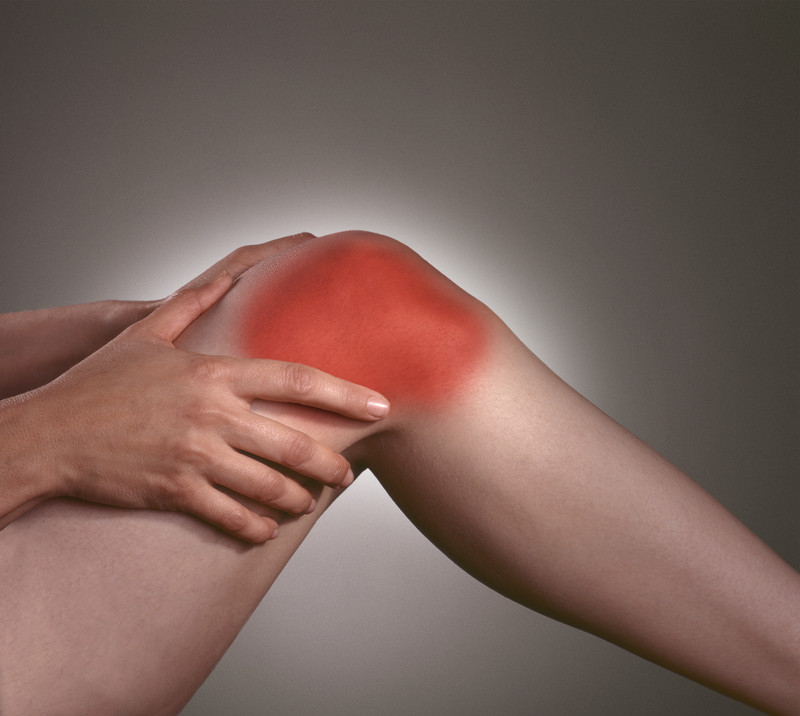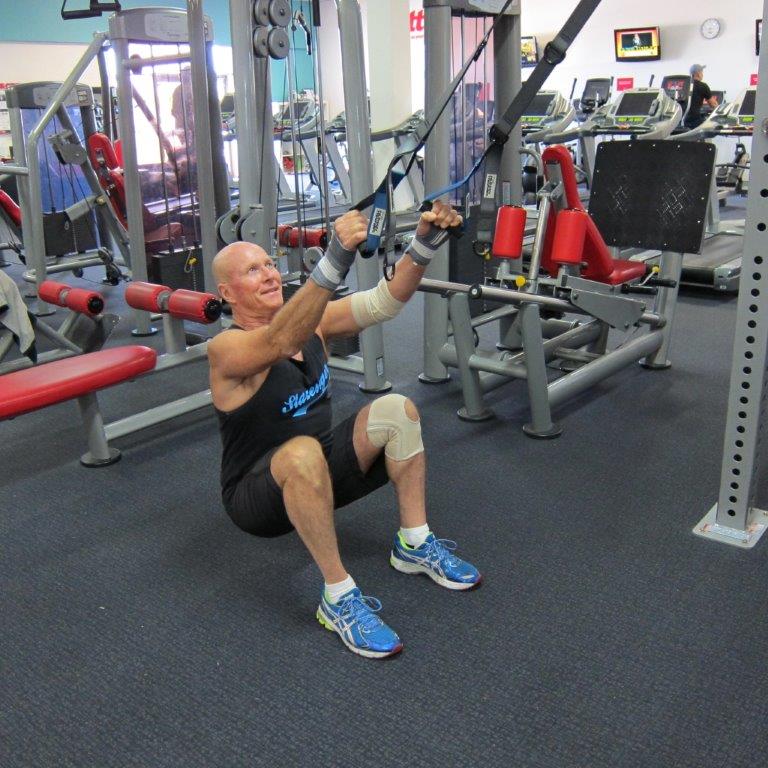Is There a Cure for Arthritis?
No…..not yet, unfortunately.
I, like many others, wish that the world of medical science would hurry up and find something for us.
But let me say this……the best relief I have found for arthritis, and in most cases, a partial cure (which beats having an operation), is regular exercise.
Lifestyle and your diet help too.
So my advice is, find an activity you can enjoy for the rest of your life…..because that’s how long you’ll need it.
In the end, you need to think about it like this…….if you want to keep moving, you have to keep moving.
I can only agree with what Dr Even Osar has to say here: “Osteoarthritis, more accurately described as degenerative joint disease, is just one manifestation of poor movement strategies and is not simply a process of getting older.”
And I am sure you will also find some very useful information in this video about Preventing and Treating Osteoarthritis:
Some of the symptoms most arthritis sufferers have to endure are constant pain, stiffness in the joints and there may also be swelling to some other body parts as well……..for example, wrists and fingers.
Because arthritis can’t be cured, it is generally managed by taking medication and making lifestyle changes to ensure that the flare ups caused by the disease are reduced in frequency and discomfort and the length of time taken for the disease to affect the joints.

It is certainly possible to manage arthritis by taking the right medications, eating a properly balanced diet (the Mediterranean works for me), and participating in and understanding the importance of a moderate but regular exercise program.
And that is one reason why strength training is so important as you start ageing. It works wonders for me and all of my Active Ageing clients so I urge you to give it a try. “After three months in the gym I was amazed at the improvement” said one of my tribe.
I also recommend understanding Why Exercise Is Vital In Preventing Serious Health Issues in Old Age.
“Building muscle supports and protects joints, which can increase mobility and reduce stiffness and soreness,” says Stanley Wainapel, MD, at Montefiore Medical Center in New York City when talking about Strength Training for People with Arthritis.
Recent studies done by the Hospital for Special Surgery in New York City showed that arthritis patients who engaged in exercise at least once a week experienced less pain and joint stiffness.
The study was done on two hundred patients, who took part in dance classes, yoga, Pilates that was only done on a chair or mat, and Tai Chi. They showed improved movement, less pain, and increased flexibility. This works for people with rheumatoid arthritis and osteoarthritis.
But just a warning before you start, it is always advisable before you engage in any form of exercise that you talk to your doctor to help determine what frequency and intensity to work at to help relieve the arthritis symptoms rather than make them worse.
The School of Sport, Health and Exercise Sciences, Bangor University conclude in a paper they wrote titled Benefits of Exercise in Rheumatoid Arthritis that “The importance for the inclusion of exercise training in the treatment of RA is now clear and proven. Exercise, in general, seems to improve overall function in RA without any proven detrimental effects on disease activity.”
I would also recommend you engage in low-impact sports and activities to reap the most benefit from your new exercise program.
I find activities such as water sports (aqua aerobics) and swimming are beneficial as you can exercise without further straining your joints. I have also had excellent results with a program of simple body-weight exercises done three times a week.
Personally, the optimum arthritis exercise program would include both aerobic and resistance training. This is what has worked best for me over the years.
Lifting weights encourages weight loss and is very beneficial because developing stronger muscles will help ease the pressure on your joints.
Whatever you do, don’t over-exercise as this will only have adverse effects on your health especially if you engage in activities where you wear the joint cartilage further than it is already worn.
Diet is another great (and very important) way to manage arthritis and to reduce how often flare-ups occur.

Take the time to do some research about foods that are likely to cause inflammation in your body and start cutting them out of your diet. Here is a good place for you to start your arthritis research: Eliminating Tomatoes and other Food Myths about Arthritis and here is another good one from The Huffington Post – Inflammatory Foods: 9 of the Worst Picks for Inflammation.
When it comes to food, I tend to think you can’t go too far wrong by following the simple advice of food author Michael Pollan: “Eat food. Not too much. Mainly plants.” I have one other caveat, make sure you add some exercises for arthritis.
Doctors and nutrition experts recommend eating plenty of fruit and vegetables and foods that have a lot of iron and calcium. Fatty fish high in Omega oils is also good for arthritis patients.
This includes fish such as herring, mackerel, salmon, sardines, trout, and fresh tuna.
But be careful you don’t eat too much of these fatty fishes as Omega 6 fatty oils may react and cause inflammation. Also, be aware that vegetable oils and margarine are very high in Omega 6. Best to stick with extra virgin olive oil for your good fats.
For arthritis sufferers, I also recommended you reduce your intake of bad fats, sugars, and excess of alcohol.
This is because when you eat too much of foods with these components, you will very likely experience more pain, swelling, and joint stiffness (as well as gain weight).
As we age and whether we have arthritis or nor, it is recommended you maintain your weight and avoid being overweight or obese. This is because the extra weight puts additional pressure on the joints leading to even faster wearing of the joints and more pain and suffering. As you can imagine, the long term results of this sort of scenario are not good.
Another form of treating arthritis is through surgery with knees and hips generally being the most common joints treated. For me, this is more of a last resort form of treatment.
As many of you know from bitter experience, the hip is a body part that can cause plenty of pain from arthritis. Hip resurfacing is done to relieve the constant pain from arthritis.
During the surgery, the damaged cartilage is capped with metal to prevent the bones from rubbing against each other. The rubbing of the bones is the cause of the joint pain and swelling that arthritis patients suffer from.
Here is a good resource for you to find out all you need to know about; ‘What are the advantages of hip resurfacing and knee surgery?’
There are a number of different medications recommended by doctors and physicians to treat arthritis. I use this type of therapy as a last resort and prefer to use diet and exercise to treat my symptoms. Although I do use a spray called Zen Herbal Liniment.
After trying many different creams and potions I find I do get good relief from Zen for the odd injuries I get when I go a bit too hard at the gym.

I also found the following comments in the Journal of Aging Research paper about Benefits of Exercise in Rheumatoid Arthritis which said, “The use of high-dose steroid therapy to control disease activity can exacerbate muscle atrophy in RA. In addition, the symptoms of the disease, for example, pain and fatigue, also result in RA patients being less physically active; decreasing physical activity then becomes part of the vicious circle of further decreasing muscle mass and has detrimental effects on other aspects of skeletal muscle health. Loss of strength, of up to 70%, is a common finding in RA patients in comparison to healthy counterparts. Loss of muscle mass is the main contributor to the loss of muscle strength.”
Unfortunately, some people experience negative reactions to different medications and it is recommended you monitor your progress when on a new drug of any sort so you can inform your physician of any such nasty symptoms.
Some Natural Remedies for Arthritis Sufferers
There are also many studies from around the world showing that curcumin is an excellent complementary treatment for arthritis. I also feel more people should be made aware of the benefits of natural remedies for inflammation rather than taking prescription and across the counter drugs. I highly recommend you read this informative article I came across recently: 10 Health Benefits and Uses for Tumeric Curcumin Supplements.
Many people prefer a more natural approach to pain relief caused by arthritis so fish oil for rheumatoid arthritis might be something else you would like to try before taking man-made drugs. Personally, I prefer to eat fresh salmon three times a week – it gives you the best of both worlds as there are quite a number of dodgy fish oil capsules on the market these days.
Methotrexate based drugs are a popular option used by doctors to treat and control arthritis.
A new drug, Xeljanz works as an alternative to Methotrexate so people who are intolerant to Methotrexate have the option of taking Xeljanz, which was approved by the FDA and released into the market in late November 2012.
However, the drug still has some side effects that include opportunistic infections and tuberculosis among others so do your own research first.
The one thing I have found over the years that works best for me is ongoing regular exercise.
A few years ago I was advised by a doctor I needed a full knee replacement. Not happy with his prognosis and the pills they wanted me to take (many of which don’t seem to work very well), I designed an exercise program to suit my arthritic knee. Within four months I went from less than 50% flexion back to more than 90% and the pain is now only incidental.
My best advice is, find an arthritis exercise program from someone who understands the needs of seniors and go for it.
But a little warning for you, don’t change your medication before consulting your doctor.
In closing, always remember my well worn saying………if you want to keep moving you have to keep moving.
I hope this helps and if you have any questions then please don’t be afraid to ask.
Cheers – John – your Active Ageing Mentor and Coach.
Leave a Reply